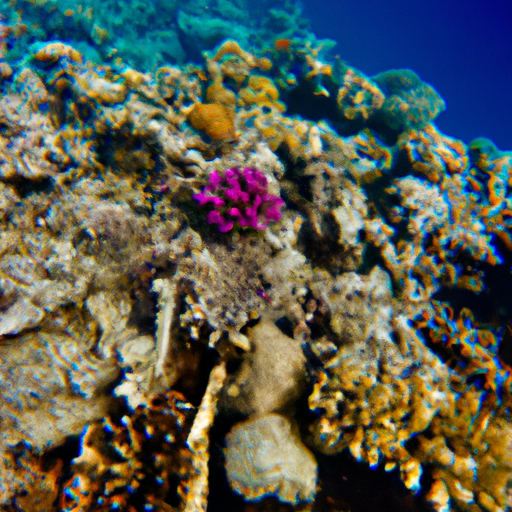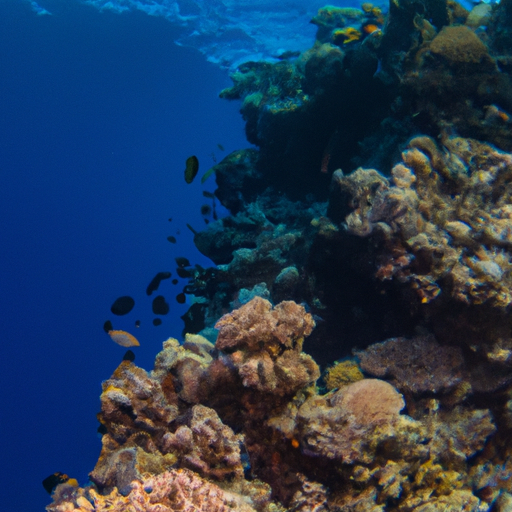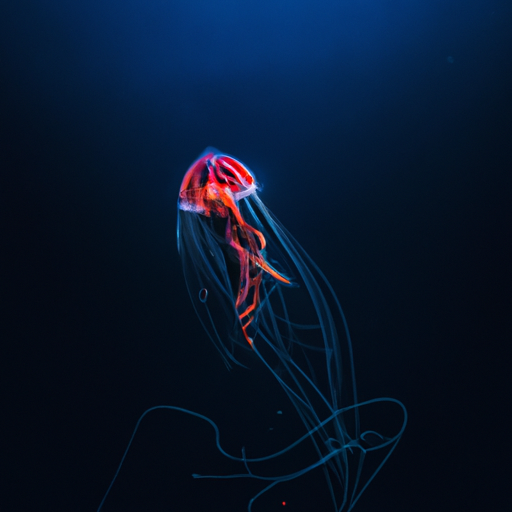
Diving into the Depths: Discovering the Diverse Species of Marine Life
Exploring the enchanting world of marine life is like embarking on a magical journey into the depths of the ocean. The vastness of the ocean houses a stunning array of aquatic biodiversity, with countless species waiting to be discovered. From the tiniest plankton to the majestic whales, the marine ecosystem is a wondrous tapestry of life.
One of the most fascinating aspects of this underwater world is the incredible diversity of species that call it home. The ocean is teeming with life, with scientists estimating that over two million species reside in its depths. These species span across various taxonomic groups, including fish, mollusks, crustaceans, marine mammals, and corals, among others.
Delving deeper into this aquatic biodiversity, we encounter an astonishing range of marine creatures. Coral reefs, for example, are like bustling cities underwater, harboring a plethora of species. These vibrant ecosystems are home to an array of fish species, including the iconic clownfish, as well as various corals, sponges, and invertebrates. The intricate symbiotic relationships between different species within a coral reef create a delicate balance of life.
Venturing further into the depths, we encounter the mesmerizing world of marine mammals. From playful dolphins to gentle manatees to the colossal blue whale, these creatures captivate our imagination and remind us of the beauty of nature. Marine mammals have adapted to life in the ocean in remarkable ways, with features such as streamlined bodies, flippers, and blowholes facilitating their survival in the water.
Beneath the surface, we also find a diverse array of fish species, each adapted to their unique environment. From the vibrant colors of tropical fish found in coral reefs to the sleek bodies of predatory sharks lurking in the depths, these underwater creatures showcase the remarkable diversity of marine life. Reefs and rocky outcrops provide shelters for countless species, while open ocean habitats are home to massive schools of fish, creating a mesmerizing spectacle.
Furthermore, the ocean is home to a variety of invertebrate species, such as crustaceans and mollusks. From the intricate shells of seashells to the fascinating exoskeletons of crabs and lobsters, these creatures display an incredible range of adaptations. Invertebrates play crucial roles in the marine ecosystem, serving as both predator and prey and contributing to the overall balance of the ecosystem.
Exploring the enchanting world of marine life reveals the vastness and beauty of our oceans. It provides us with a profound appreciation for the incredible diversity of species that inhabit this underwater realm. As we delve deeper into this wondrous world, we uncover the intricate relationships and adaptations that have allowed marine life to thrive. Each discovery illuminates the importance of preserving and protecting this fragile ecosystem, ensuring that future generations can continue to marvel at its magnificence.
Unveiling the Hidden Beauty: Exploring the Enchanting World Under the Sea
Exploring the enchanting world of marine life is like embarking on a journey into an entirely different universe. The vastness and diversity of our oceans are truly awe-inspiring, with a plethora of fascinating creatures and ecosystems waiting to be discovered. This article delves into the captivating world under the sea, providing a close-up look at the astounding aquatic biodiversity that exists beneath the surface.
One of the most remarkable aspects of the marine ecosystem is the sheer variety of species that call the ocean home. From vibrant coral reefs teeming with life to the mysterious depths inhabited by bizarre deep-sea creatures, the range of marine life is truly astounding. It is estimated that there are over 200,000 known species in the ocean, and scientists believe that there are likely many more yet to be discovered.
Explorations of the ocean have revealed an astonishing array of creatures, each uniquely adapted to their underwater habitat. From the graceful movements of dolphins and sea turtles to the intricate patterns and vibrant colors of tropical fish, marine life offers a visual spectacle like no other. The complex interactions and symbiotic relationships between species further highlight the beauty and interconnectedness of this hidden world.
Under the sea, one can witness the great migrations of marine animals, such as the majestic humpback whales or the graceful manta rays. These journeys, spanning thousands of miles, are a testament to the resilience and adaptability of these creatures. The ocean acts as a crucial pathway, connecting different regions and allowing for the exchange of nutrients, genetic diversity, and even cultural behaviors.
However, the enchanting world of marine life is facing numerous threats. Pollution, overfishing, and climate change are wreaking havoc on fragile ecosystems and causing irreparable damage to underwater habitats. Coral reefs, often referred to as the rainforests of the sea due to their immense biodiversity, are particularly vulnerable. Rising ocean temperatures and ocean acidification are leading to coral bleaching, which can have devastating effects on both the coral itself and the myriad of species that depend on it for survival.
Conservation efforts have become increasingly important in safeguarding the delicate balance of marine life. Marine protected areas aim to preserve critical habitats and provide a safe haven for threatened species, giving them an opportunity to recover and thrive. Initiatives to reduce plastic pollution and promote sustainable fishing practices are also crucial to ensure the long-term health of our oceans.
In conclusion, exploring the enchanting world of marine life offers a close-up look at the incredible biodiversity that exists beneath the sea’s surface. From the vibrant colors of coral reefs to the majestic movements of marine mammals, every aspect of this hidden world is a testament to its beauty and complexity. However, as we unveil the hidden treasures of the ocean, it is vital that we also take responsibility for its conservation, ensuring that future generations can continue to marvel at its wonders.
From Vibrant Coral Reefs to Mysterious Deep-Sea Creatures: A Journey through Aquatic Biodiversity
Exploring the Enchanting World of Marine Life: A Close-Up Look at Aquatic Biodiversity
Aquatic biodiversity encompasses the incredible variety of life forms that inhabit our planet’s oceans, rivers, lakes, and other bodies of water. From vibrant coral reefs to mysterious deep-sea creatures, the marine environment offers a vast and fascinating realm to be explored and studied. In this close-up look at aquatic biodiversity, we will delve into the wonders of this enchanting world.
Coral reefs, often referred to as the rainforests of the sea, are teeming with an astonishing array of marine life. These vibrant underwater ecosystems are home to a multitude of species, including colorful fish, intricate coral formations, and other fascinating organisms. The intricate symbiotic relationships between different species within coral reefs make them a captivating subject of study for marine biologists.
Beyond coral reefs, the open ocean holds its own mysteries and wonders. From elusive dolphins gracefully gliding through the waves to majestic whales breaching the surface, the vastness of the ocean is full of awe-inspiring sights. The incredible migration patterns of marine species, such as sea turtles and various fish, further highlight the diversity and complexity of life in our oceans.
Exploring the depths of the ocean reveals even more intriguing marine life forms. The deep-sea, with its extreme pressures and dark, cold environment, is home to creatures that have adapted in remarkable ways. Bioluminescent organisms, such as the famous anglerfish, use light to attract prey or communicate with potential mates in the pitch-black depths. Other peculiar deep-sea dwellers include the vampire squid with its striking red eyes and gelatinous body.
Aquatic biodiversity does not stop at the ocean’s edge, as rivers, lakes, and other freshwater environments also host a wide range of species. Freshwater ecosystems provide habitats for diverse flora and fauna, ranging from fish and amphibians to aquatic plants and invertebrates. Rivers, in particular, offer a unique environment for various species to thrive, with their flowing currents and interconnected habitats.
Understanding and preserving aquatic biodiversity is crucial for our planet’s well-being. Marine ecosystems not only support countless species but also play a vital role in regulating global climate and providing essential ecosystem services. The loss of biodiversity in our oceans and other aquatic environments can have far-reaching consequences, disrupting the delicate balance of nature and impacting human societies.
Through scientific research, education, and conservation efforts, we can continue to explore and appreciate the enchanting world of marine life and protect the invaluable biodiversity it encompasses. As we delve further into the mysteries of aquatic ecosystems, there is no doubt that we will uncover more astonishing discoveries and deepen our connection to the wonders of the underwater world.
Preserving the Treasure: The Importance of Protecting Marine Ecosystems
The marine world is a captivating and diverse ecosystem that is teeming with life. From vibrant coral reefs to vast open oceans, it is home to a remarkable array of organisms that have evolved and adapted to survive in these aquatic environments. As we explore the enchanting world of marine life, we gain a deeper appreciation for the importance of protecting these delicate ecosystems and the biodiversity they support.
Aquatic biodiversity refers to the variety of species and ecosystems that exist within marine environments. It encompasses everything from microscopic plankton to enormous whales and includes an incredible range of plants, animals, and microorganisms. The interconnectedness of these organisms is crucial for maintaining the health and balance of marine ecosystems.
Each species plays a unique role in the marine food chain, and their interactions help regulate the population sizes and distributions of other organisms. For example, apex predators such as sharks help control the population of smaller fish, preventing them from overwhelming the ecosystem. Additionally, certain species of fish and invertebrates are essential for the health of coral reefs, as they graze on algae that could otherwise smother the corals.
Furthermore, marine organisms provide us with numerous ecological services. Some produce oxygen through photosynthesis, while others act as natural water filters, improving water quality. Many species also play a key role in carbon sequestration, helping to mitigate the effects of climate change. The loss of any of these species can have far-reaching consequences for both the marine environment and the planet as a whole.
Unfortunately, human activities such as overfishing, pollution, and climate change are placing immense pressure on marine ecosystems. Destructive fishing practices like bottom trawling can devastate seafloor habitats, while pollution from industries and coastal development can degrade water quality and harm marine life. Rising temperatures and ocean acidification, both consequences of climate change, threaten the survival of many marine organisms, particularly those that rely on coral reefs.
To protect and preserve the treasure of marine biodiversity, it is crucial that we take action. This involves implementing effective conservation measures, such as establishing marine protected areas, promoting sustainable fishing practices, and reducing pollution. Additionally, raising awareness and educating the public about the value of marine ecosystems can inspire individuals to make conscious choices that have a positive impact on the environment.
Exploring the enchanting world of marine life not only offers us a sense of wonder and awe but also highlights the urgent need to protect and conserve these delicate ecosystems. By understanding the importance of aquatic biodiversity and taking proactive measures to safeguard it, we can ensure that future generations can continue to marvel at the wonders of the marine world.


